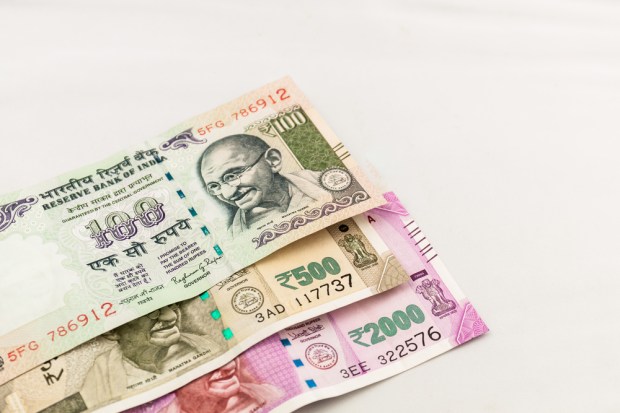India’s Grand (Cashless) Experiment, One Year On

Anniversaries are a time for reflection, and one year into India’s grand de-monetization drive, the results are mixed. Counterfeiting activity has simply moved to embrace the new notes. GDP is slowing. But on a brighter note consumers are ready to embrace non-cash ways of transacting. No surprise, tech heavy hitters are in the wings, waiting to deliver.
India’s decision to go cashless was a grand experiment to be sure, but did it go grandly?
It’s been a bit more than a year since India’s Prime Minister Narendra Modi brought a ban on cash into effect in the country, eliminating roughly 86 percent of its notes in circulation. As such, Nov. 8 marks a red-letter day in the nation’s history.
The scorecard is mixed, delivering on only a few stated goals, but the most important goal pertains to digital payments. After all, when physical notes disappear, commerce must still happen.
In last year’s announcement of the country’s switch to cashless, Modi vowed to short circuit the vagaries of a cash-based economy that were — and still are, in some cases — rife with black market activities like counterfeiting.
The change was sweeping indeed, and the ban on the 500 and 1,000 rupee notes was targeted expressly by the prime minister. The Reserve Bank of India said in a 2015 report that counterfeit notes had been on the rise, and the most commonly forged note was the 500-rupee denomination. According to Modi, forged 500 and 1,000 rupee notes were the handiwork of “enemies from across the border.”
In addition, the 2,000 rupee and new 500 rupee notes, introduced to help curb those activities, have themselves been counterfeited — and with high quality, noted the Directorate of Revenue Intelligence.
Interestingly, as Bloomberg reported, the actual counterfeit impact was rather slight in terms of percentage of currency, measuring approximately 0.08 percent as of the end of the second quarter and up slightly from 0.07 percent the year before. It might appear the counterfeit gamble was a bust and, in the meantime, that people held onto the old notes and returned them to bank accounts. Depositors have seemed unperturbed by the ban.
The change was initially enough to force some slowdown in the economy at large, with growth in the fourth quarter, which ended in March, slipping to 6.1 percent from as much as 8 percent previously.
Where the impact to physical notes may have left something to be desired, digital payments are garnering more interest and headlines, and some marquee names are angling to get in.
First, awareness is the key to adoption, and some encouraging statistics come from a few data points. On the heels of demonetization, the Ministry of Information Technology said earlier this month that digital transactions will grow 80 percent year on year into 2018, and the monthly average volume stands at around RS 137 crore, compared to 87 in the month before demonetization last November.
There may be greater acceleration to come. According to a Visa report, also from this past November, 78 percent of 2,000 Indian consumers surveyed are inclined to more fully adopt digital transactions.
Cash use is slowly waning — to 31 percent versus 33 percent last year — and, as Visa estimated, down to about 25 percent through the next year. Digital should get a boost, then, hosting 39 percent of transactions through the next year compared to 34 percent in the past year.
While some respondents stated that merchants have plied their wares only in cash, thus presenting a stumbling block to digitization, the tide may be turning as cash becomes less palatable.
The Centre for Digital Financial Inclusion has estimated 63 percent of retailers in the country are willing to adopt cashless payments — up from 31 percent prior to implementation of demonetization last year — in part as mobile phones are wielded by 84 percent of consumers.
It is no wonder, then, that some heavy hitters in the corporate realm are gearing to boost efforts. Samsung Pay announced it had added 1 million users in the country between the middle of September and the end of October, achieving a total of 2.5 million users since its launch in March of this year. Apple Pay wants in, too, as senior vice president Eddy Cue said. Google brought a payments app to the country in September. Paytm, which is already popular in the country, has now received a direct shot across the bow from PayPal. The entrenched company has estimated it may reach 500 million users in 2019, a bit earlier than had been estimated.
Digital payments in India are still in their early days, but the jockeying will be intense for a digital payments market that could grow to $500 billion by 2020, as estimated by Google and Boston Consulting Group, as connectivity gels with commerce.